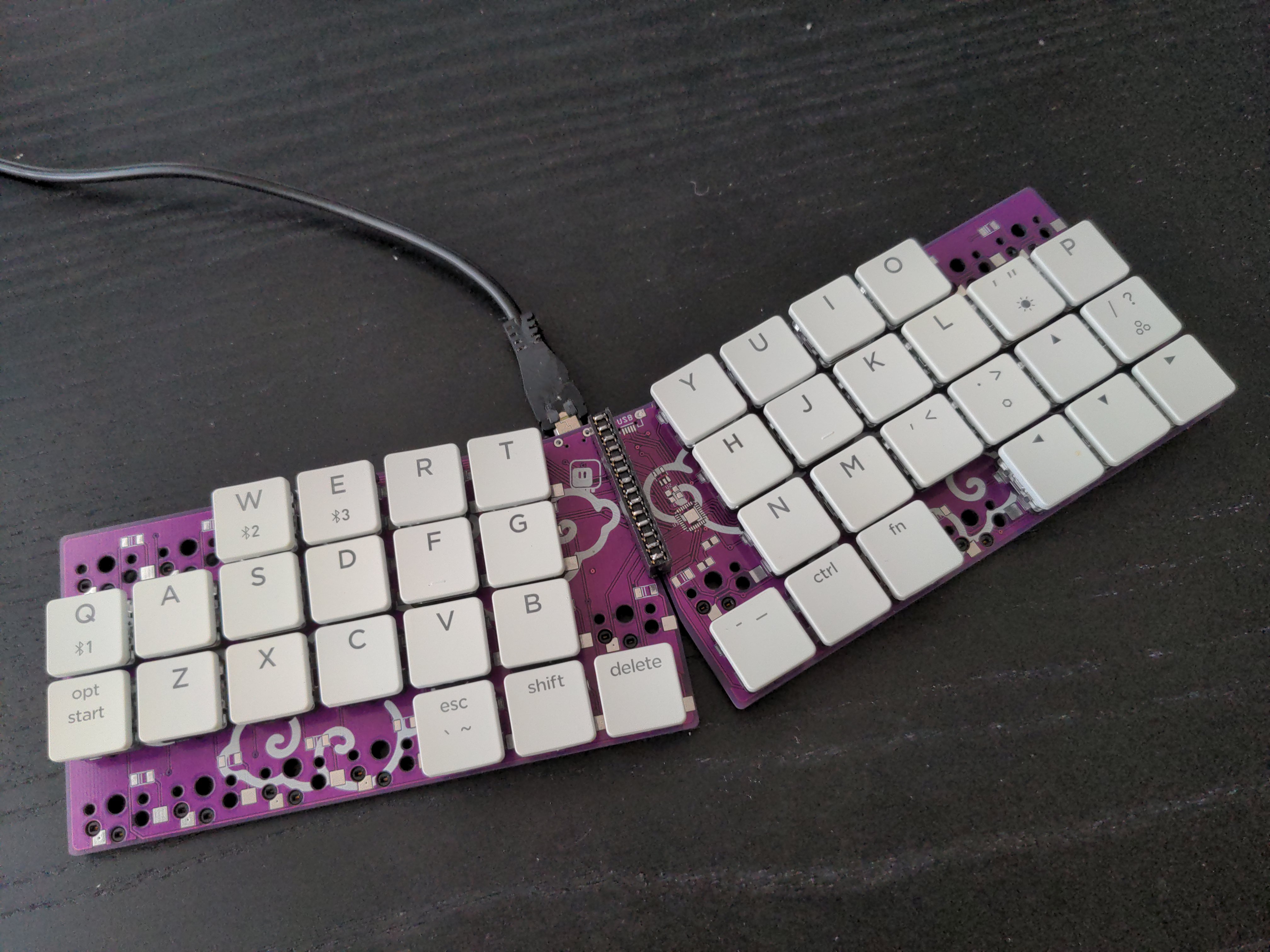The sockets arrived, and I assembled the keyboard. I used a double-row female header to bind together the two parts, in a way that lets me disconnect them for transport — it was an experiment, and I don't like it very much. The mechanical connection is pretty wobbly and feels fragile, and it doesn't look great. But it's workable, so I went ahead with the rest.
I spent several hours trying to flash the chip and failing, only to finally discover that I soldered the two capacitors rotated by 90° — serves me right to put them so close together. Fortunately that was an easy fix.
A worse problem is the fact that the holes for the plastic parts of the switches are too loose. It wasn't a problem when I soldered the switches to the board, but when using the sockets, the mechanical stability of the switches suffers. I already amended the footprint I used, and the next version will not have this problem. And there will have to be a next version, because of one more mistake...
When I went to program this board, I couldn't get a reading from any of the keys. The program works fine, but no key presses would ever register. I went through the schematic many times to verify it, I went through the physical board to check the connections. Turns out I made a tiny little mistake when I moved the diodes to the back of the board — I swapped which columns are connected directly to the microcontroller on the same half, and which go through the connector. Of course the solution is simple: just solder the chip on the other half, on the bottom of the board, and that is exactly what I did to get it finally all working. However, that also makes the USB port go on the bottom side of the board, and there is not enough clearance for the USB plug to not hit the desk. I have one USB cable where I whittled down the plug a bit to make it fit in such situations, so I could use it like that, but it's not a good solution.
Oh, and of course there were some diodes soldered the wrong way, but that's so normal that I don't even mention it.
So due to the above mistakes, I won't be publishing version two of this project, and will go straight to version three.

 deʃhipu
deʃhipu
Discussions
Become a Hackaday.io Member
Create an account to leave a comment. Already have an account? Log In.